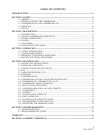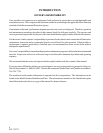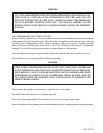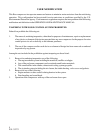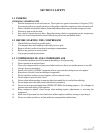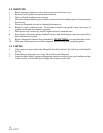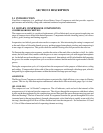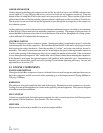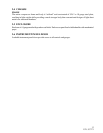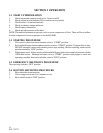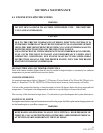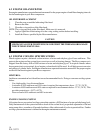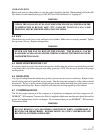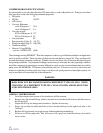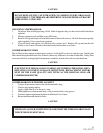12
P/N: 307271
AIR/OIL SEPARATOR
At the compressor discharge the compressed air and the hot oil flow into a steel ASME coded pressure
vessel (rated at 175 psig-250psig) that acts as a reservoir for the air and separates out the oil. From the
bottom of this oil sump the oil leaves the vessel on its way to the oil cooler. The air and the slight oil mist
still entrained in the air flow through the separator element, which removes the last of the oil from the air.
The air passes on out to its final use and the separated oil goes through the scavenge line to the compressor
to re-enter the system.
As the compressor air leaves the receiver it goes through a minimum pressure valve that is set to maintain
at least 80 psig (55kpa) in the receiver when the compressor is running. The purpose of this pressure is to
ensure that there is pressure to force the oil out of the bottom of the receiver, through the oil cooling system,
so that sufficient oil is injected into the compressor.
CONTROL SYSTEM
The Boss compressor system is simple to operate. Starting procedure is explained in section 3 and on the
instrument panel door of the compressor. Each machine has an On/Off switch and a safety bypass switch
that bypasses the safety shutdowns. Once the machine is “on line” and in the run position, control is
automatic. The control system senses the need for air and adjusts the speed of the engine and compressor
as well as the opening of the compressor inlet valve to supply the amount of air needed. If the air demand
is zero, the engine and compressor “idle” and the inlet valve is shut to control the air entering the compressor.
If the demand is maximum, the opposite happens, full speed and wide-open inlet valve. Intermediate air
demands give intermediate speeds and valve openings for maximum operating efficiency. Service and
adjustments are in section 4.14.
2.3 ENGINE COMPONENTS
ENGINE DESCRIPTION
The engine in each Boss compressor system is selected to have reserve horsepower and speed necessary to
drive the compressor and all accessories when operating up to a discharge pressure 100 psig (686kpa) to
220 psig (1509kpa).
RADIATOR
The radiator is selected to handle the heat load of the engine. Mounted next to the compressor oil cooler.
Cooling air is moved through these two coolers with a specially selected engine fan. The system is designed
to handle extreme heat conditions.
FUEL SYSTEM
All units are supplied with fuel tank capacity adequate for a day’s normal operation, fuel filtering system
and optional low fuel shutdown. See section 4.3 for fuel servicing.
MUFFLER
Engine noise is reduced by a durable, low restriction engine muffler.



